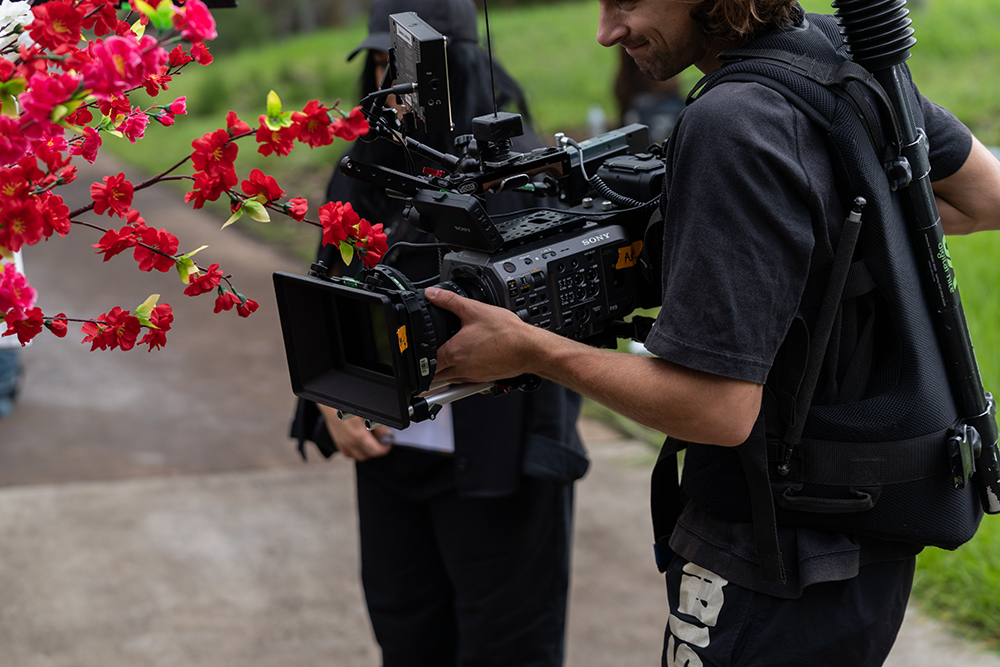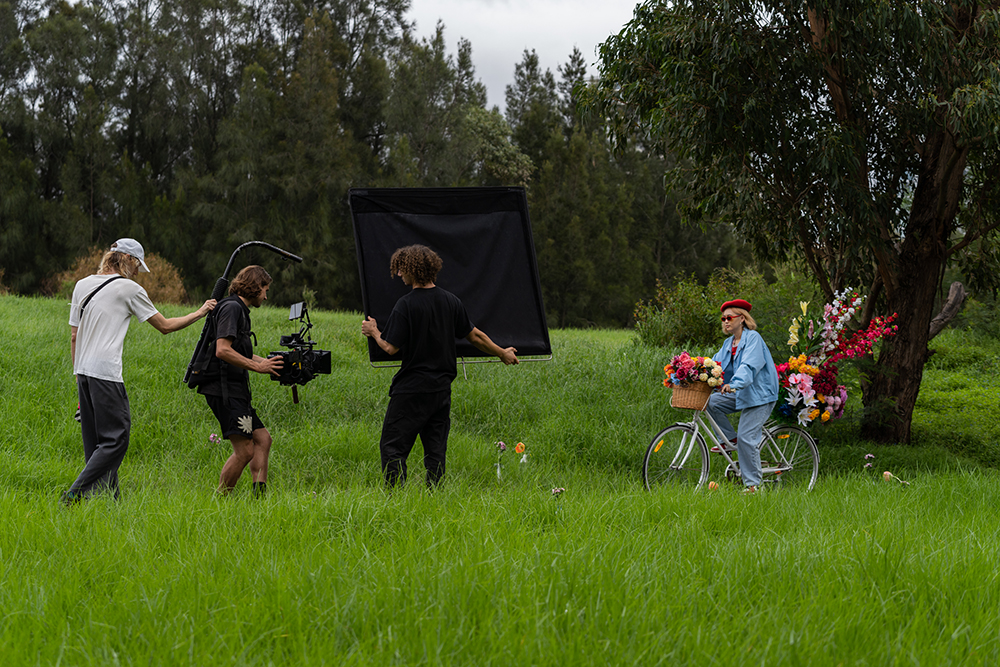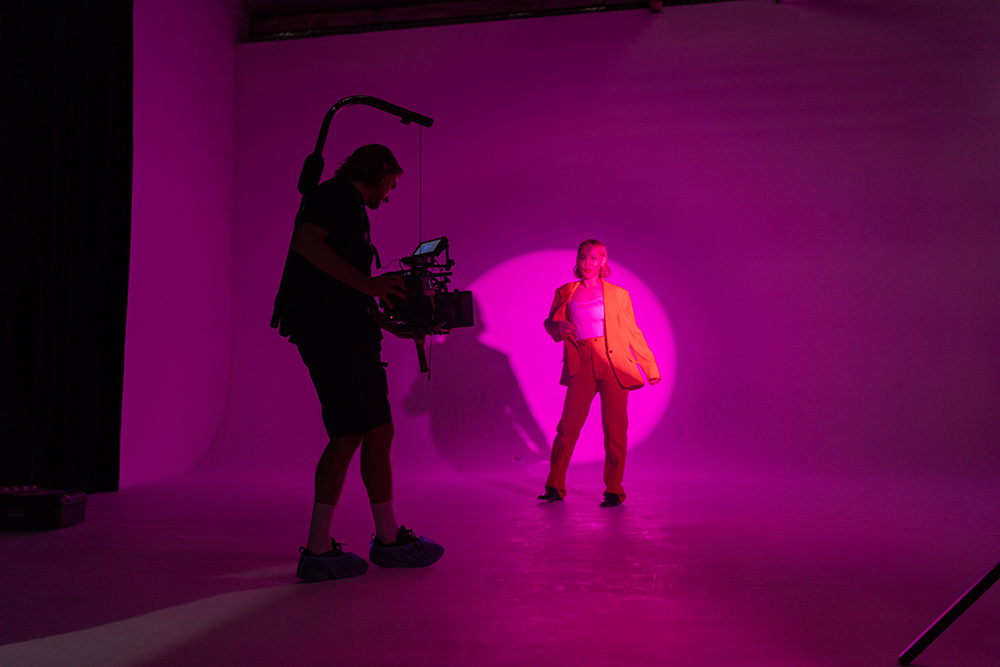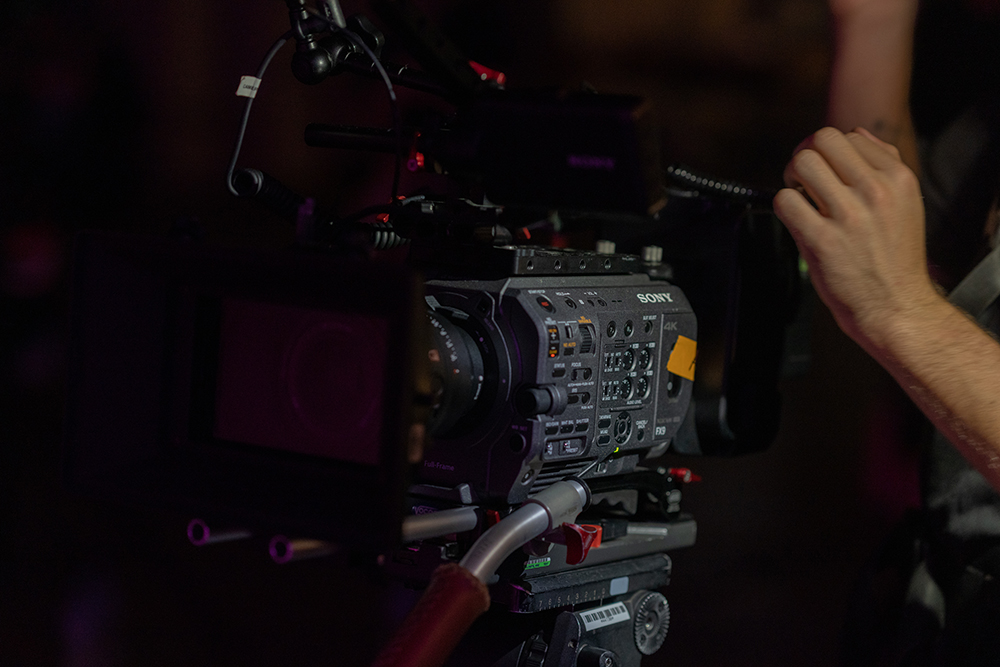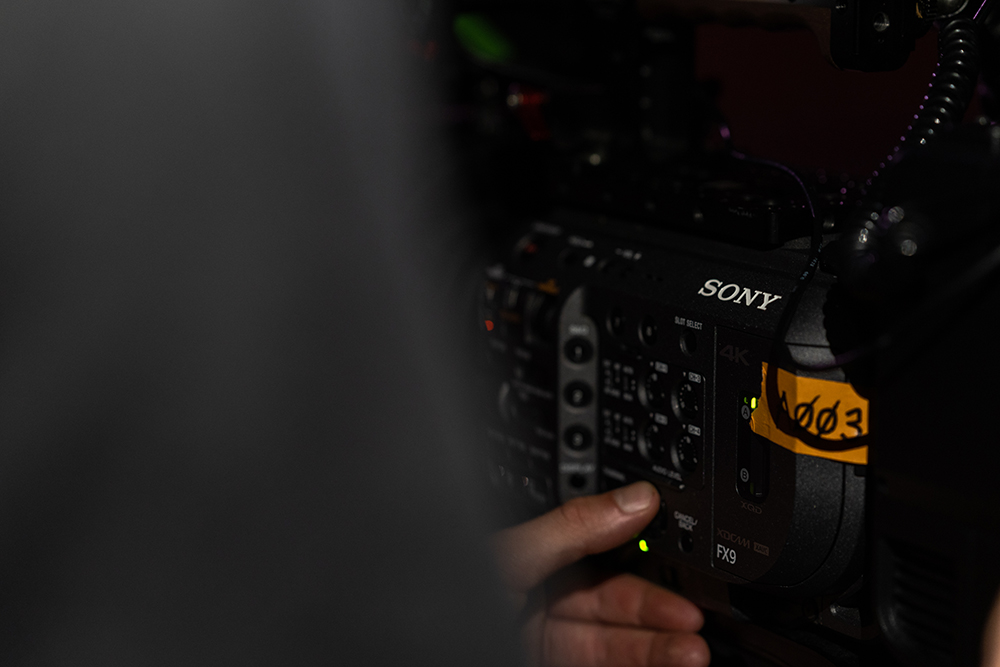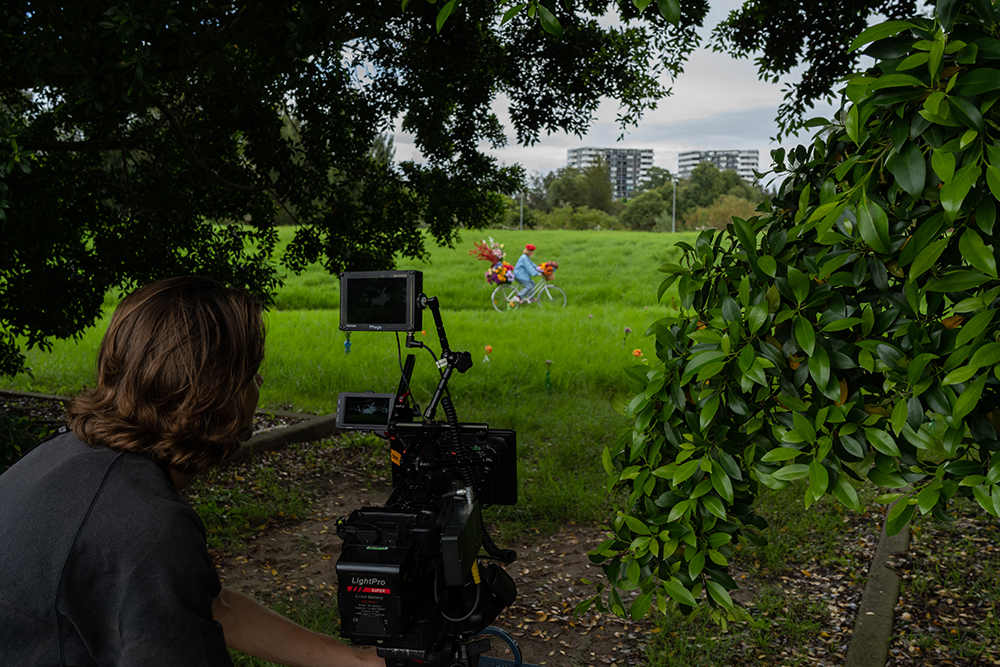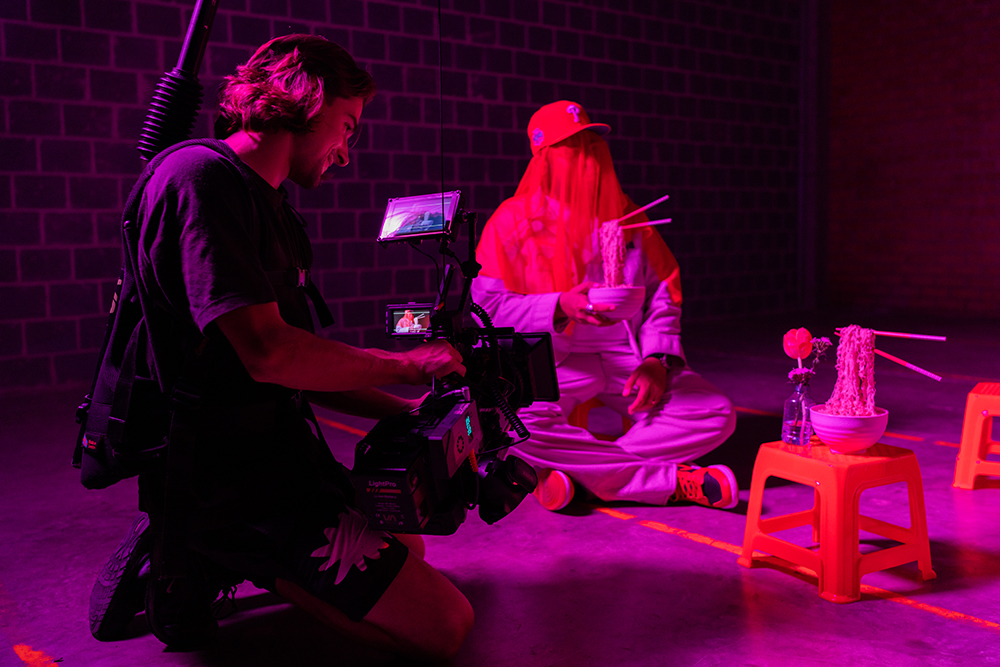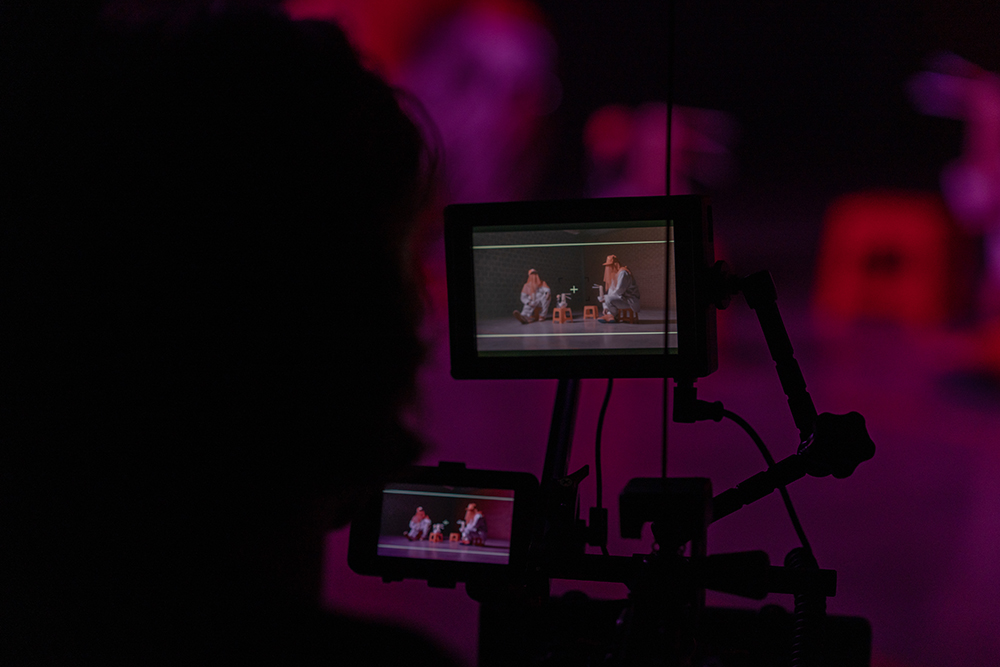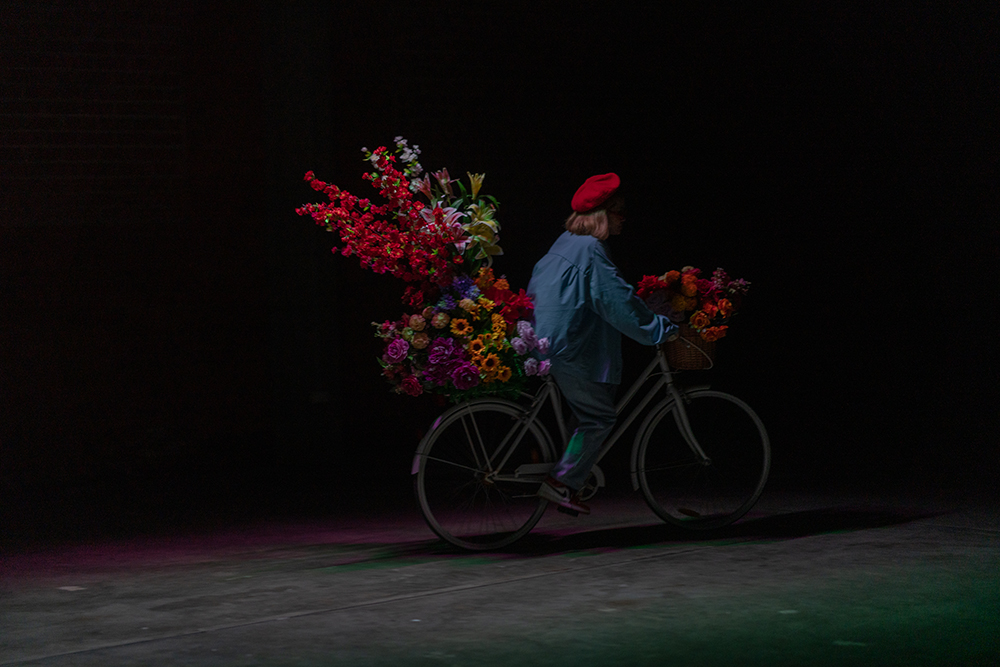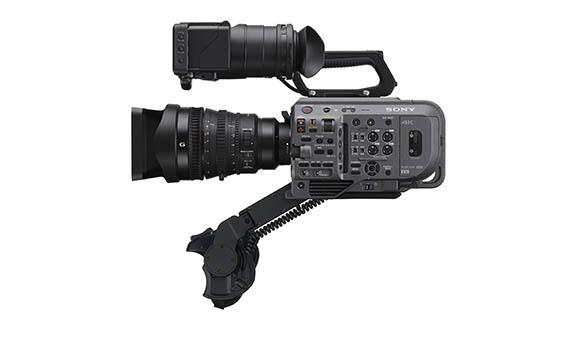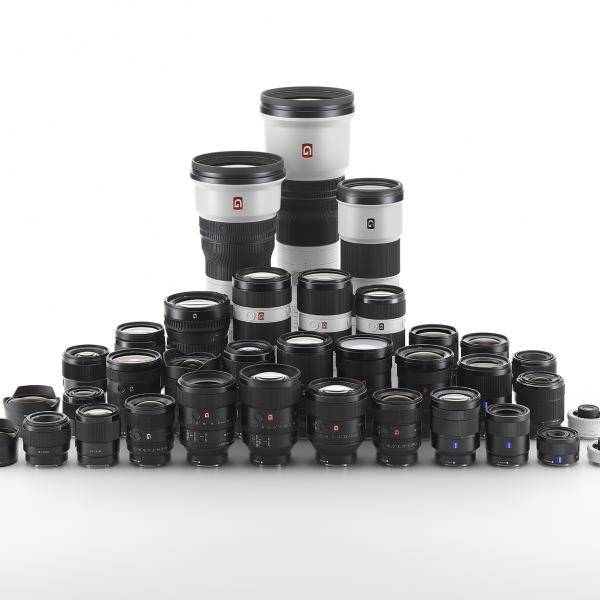REC with Cinema Line | FX9 | Tell Me the Time
Director Hollie Black and Director of Photography Cameron Johnson of “Tell Me the Time” share their inspiration and creative process behind the music video and why the Sony FX9 is their go-to camera for filming.
Tell Me the Time, featuring Jade Kenji, takes its viewers to a dreamlike realm through travelling across time and space. Jade was Hollie’s source of inspiration for this music video. It was a dedication to her own encouragement to pursue her goals and to persevere all the way to the point when she is eventually performing on stage.
Along with honouring classic rap music videos from the 1990s, Hollie also wanted to celebrate Jade's Australian-Vietnamese background in this music video by incorporating bits of Vietnamese culture and colour. Filmed with the FX9, Hollie and Cameron share more about their top three favourite features of the camera.
Top 3 Reasons Why Hollie and Cameron Love the FX9
1. Electronic Variable Neutral Density (ND) Filter
Due to the time constraints they had to work under, having the built-in Electronic Variable ND filter in the FX9 provided Hollie and Cameron with the speed and efficiency to shoot in various lighting conditions just by turning a dial on the side of the camera.
“Having a smaller [camera] body with an Electronic Variable ND filter and assignable buttons made it very easy to attain the type of shots we wanted on a time crunch whilst also feeling safe knowing that the sensor would capture a beautiful image,” Cameron stated.
2. Colour Science
Colour was a key component in the music video and Hollie wanted to maintain the colour’s consistency across all of the many shooting locations and lighting setups. With the S-Cinetone being the default look of the FX9, shots that are filmed straight out of the camera will look fresh and vivid, while highlighting the subject.
“Colour was a big thing for us, and I know because of the camera choice and lenses that we had, we could play a bit more with that and boost it in post,” Hollie said.
3. Versatility
Having a light and compact cinema camera elevated Hollie and Cameron’s shooting experience as the music video required different camera movements and continual travelling to multiple locations. “The FX9 really helped our project by being the ultimate package in terms of what is already built into the camera. It gave us great flexibility when we were on the run in our different locations,” Hollie said.
Though several adjustments had to be made during the creative process of filming the music video, Cameron's camera choice remained unchanged. “No matter how much the story and the visual aesthetic we were trying to convey changed, the FX9 was always going to do what I needed it to,” Cameron expressed.
A Quick Q&A with Hollie Black and Cameron Johnson
What drew you to Sony’s Cinema Line cameras?
[Hollie] Every project I create has an emphasis on movement; whether it be the creativity behind the camera movement, transitions or the expression and movement of the talent within the space. For me, the versatility and lightweight build of the camera gave us way more flexibility on the go. We could move in and out of tight spaces or switch up from a gimbal to a slider really quickly, with the number of locations we had. It was also a dream to have such a compact body/kit.
[Cameron] I am a big fan of Sony's past cameras, especially the Sony FS7 and, recently, the Sony VENICE. So, when I realised that the Sony FX9 combined the form factor and ergonomics of an FS7 with the large format sensor and the overall look that the Sony VENICE can produce both in-camera and during colour grade, it became an obvious choice.
How did Sony’s Cinema Line cameras help you achieve your artistic vision?
[Hollie] This project was heavily inspired by 90’s music videos and the bold style of the creative genius, Virgil Abloh. I wanted bright dreamscapes and colourful outfits juxtaposed against multiple lighting setups. So, having the FX9 meant we could capture those really vibrant hues and have a great dynamic range which allowed us to play with our colours more in the grade. The FX9’s built-in Electronic Variable ND Filter and S-Cinetone colour science also meant that we could capture my dream technicolour vision in both the harsh outdoor and studio environments as I could immediately how vivid the footage was.
[Cameron] I touched on this in the earlier question, but to extend on it, the FX9 was an awesome tool during the shoot. The new large format sensor combination in a small, easy-to-operate body provided the perfect camera for this project. We had to move fast, considering the number of locations we had to cover. Additionally, the amount of digital information captured by the FX9 gave us lots of flexibility in the grade, allowing us to push further the visual aesthetic we were after.
How has the FX9 helped to support and ease your post-production process?
[Hollie] Everything about the FX9 made our post-production process easier. Having the full-frame sensor, 15+stops dynamic range and 4K shooting, we were able to crop and colour grade effortlessly. Some of our studio shots were really bright with an intense red monochromatic suit and our colour grader, Nick, was able to push it to the limits without compromising the image quality. The same goes for the carpark space. As a director, I was happy to be able to have so much freedom with my colour grade in the editing process. Also, with the S-Cinetone, I could see through the whole process of how vivid and crisp the footage was. I have said it many times, and although worth mentioning again, all the in-built features of the camera were so helpful in this shoot.
[Cameron] The two things that stood out to me during post-production were, firstly, file management. I was impressed by the image quality we were able to get shooting 4K large format whilst also not having mounds of data for our editor to sit through. Secondly, it was the amount of data we had to play with in the colour grade. This is a huge asset to a shooter who may rely more on the grading process for their look.
Unleash the Power of Visual Storytelling
We now live in a new era of content consumption where we have the freedom to connect with far-off individuals, explore different cultures and undiscovered tales whenever we want. The Cinema Line range of cameras is developed with fellow filmmakers in mind, enhancing their skills and bringing their creative ideas to life.

